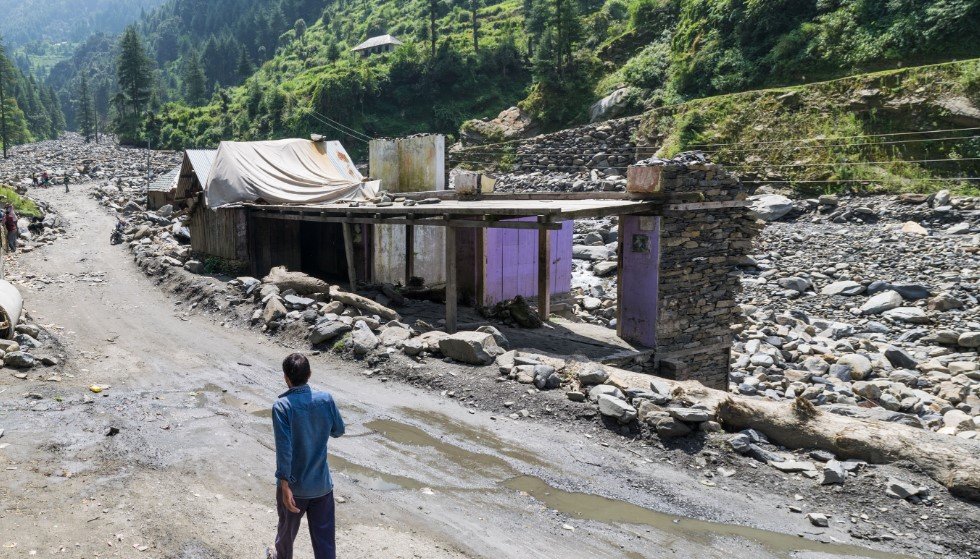The skies opened up over Himachal Pradesh again on Sunday, triggering cloudbursts and flash floods that left behind more destruction—and fresh worries. Since June 20, when the monsoon first rolled in, 78 people have died in the state. Fifty of them were caught up in sudden disasters like landslides, overflowing rivers, and collapsing hillsides.
This weekend’s heaviest blows hit Mandi and Chamba. And though no lives were lost in the new cloudbursts there, officials say the ground remains treacherous.
Red Alerts, Washed Roads, and a Missing Woman in Hamirpur
In Hamirpur district, a woman was swept away in strong currents after a rain-fed stream swelled past its banks. Search teams haven’t found her yet. In Mandi, meanwhile, two pedestrian bridges vanished into muddy torrents, and nearly 50 bighas of land just disappeared under a churning drain in Kotarang village.
The India Meteorological Department (IMD) issued a red alert Sunday for three districts—Kangra, Sirmaur, and Mandi. That means the weather office expects “extremely heavy” rainfall in isolated spots, the kind of rain that can knock out roads, flatten trees, and trigger landslips.
An orange warning was also issued for most of the other districts, barring the high-altitude tribal zones of Kinnaur and Lahaul-Spiti. Basically, only the most remote snow-bound parts of Himachal are safe right now.

Landslips Cut Access to Tourist Hub in Mandi
In Mandi’s Janjehli valley, more than 60 tourists and hotel staff found themselves stranded as landslips buried the road leading to the resort they were staying at. Rescue teams from the National Disaster Response Force (NDRF) hiked in and brought them out Sunday afternoon.
It was no easy task. The route was blocked at multiple spots by debris and fallen trees. Crews used handheld tools and ropes to get people out on foot. Some were carried through narrow trails where even motorcycles couldn’t go.
“They were all exhausted but safe,” said one NDRF official on-site. “The landslides came fast and without much warning. We got them out just in time.”
And just like that, a weekend getaway turned into a mud-drenched memory.
Rivers Swell, Soil Weakens, Roads Crack
Sunday’s rains didn’t just cause trouble in Mandi. In Chamba, officials reported multiple flash floods in the smaller valleys where cloudbursts struck. Narrow village paths were swallowed up. Water tanks and fencing gave way.
The damage wasn’t uniformly catastrophic—but it was widespread enough to throw life off balance. The state disaster control room said damage assessments were ongoing, especially in remote areas where communications were patchy.
Here’s how rainfall impact has added up since June 20:
| Impact Type | Cases Reported (June 20 – July 6) |
|---|---|
| Total Deaths | 78 |
| Rain-related Fatalities | 50 |
| Landslides | 160+ incidents |
| Roads Damaged | Over 300 stretches |
| Houses Damaged | 420+ (partial or total) |
You can feel it in the hills—the soil’s soaked and unstable. With more rain coming, people are nervous.
Weather Office Warns It’s Not Over Yet
The forecast doesn’t ease any nerves. The IMD says Himachal could get hit again with very heavy rainfall through at least July 9.
And not just one or two areas. Most of the mid and lower hill districts are in the crosshairs. High-speed winds and localized hailstorms are also expected in a few pockets, making the next few days even riskier.
People in landslip-prone zones have been told to stay indoors. Schools in affected areas are either closed or running on alert mode. Buses are skipping certain routes.
“The land just gives way when it’s this wet,” said a state highway engineer based in Solan. “You patch a road, and another part crumbles two hours later.”
That’s how fragile things are right now.
Relief Ops Under Strain as Monsoon Enters Third Week
Emergency teams are stretched thin. The state disaster response force has been rotating units between Mandi, Kangra, and Shimla depending on where the alerts are highest. Helicopters have been kept on standby in case evacuations are needed.
But terrain is a challenge.
• Some villages haven’t had power in days.
• In a few locations, road repairs last barely 24 hours before another landslip undoes the work.
• Medical supplies are being flown to remote dispensaries in the Kullu hills.
“We’re trying to do as much as we can with what we have,” one disaster management official said. “But if this keeps up another week, we’ll need more boots on the ground.”
It’s not just about machinery or man-hours. It’s emotional too. Locals are dealing with crop losses, blocked roads, water shortages, and that constant fear that the next cloudburst might be the one that hits them directly.
Community Support, But Sleepless Nights Too
In villages like Kotarang and Kugdi, where drains swallowed up farms and access paths, neighbors are banding together to dig trenches and move rubble by hand. The government has promised compensation for land loss—but people here have learned not to hold their breath.
One farmer in Kotarang, shoulders slick with mud, pointed to a corner of his washed-out field. “That’s where I had maize growing last week,” he said, half-laughing. “Now it’s just gone. Like it never happened.”
He added, “What can you do? You watch the news, see places getting washed out. You think, maybe it won’t be us this time. But this year, it is.”
